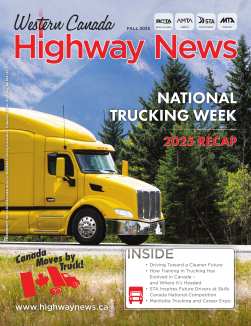
NSC Standards 7, 14, and 15: Cornerstones of Commercial Vehicle Safety – and What’s Next
Jun 12, 2025
The Canadian Council of Motor Transport Administrators (CCMTA) held its Annual Meeting in Regina, Saskatchewan this year, drawing together transportation professionals from across Canada to address the future of commercial vehicle safety. A significant takeaway for the Saskatchewan Trucking Association (STA) was the CCMTA’s announcement that three critical National Safety Code (NSC) standards—Standards 7, 14, and 15—are slated for review in the near future. The goal: to identify efficiencies and opportunities for improvement across Canada’s safety framework. These standards are fundamental to ensuring safe and responsible operations across the commercial trucking industry, and any changes to them will have a direct impact on carriers operating in Saskatchewan and throughout the country.
Understanding the Standards
NSC Standard 7: Carrier and Driver Profiles
Standard 7 deals with how jurisdictions collect and maintain vital data on both carriers and their drivers. This includes driver licensing details, Commercial Vehicle Safety Alliance (CVSA) inspection results, audit findings, and enforcement actions.
Why It Matters:
Accurate and accessible data helps regulators assess whether a carrier or driver is in compliance with national safety expectations. For carriers, this means that any operational or safety issues—whether isolated or systemic—can be tracked and addressed more proactively.
NSC Standard 14: Safety Rating
Standard 14 provides a consistent framework for assigning safety ratings to motor carriers. These ratings are based on several performance indicators, including collision history, CVSA violations, and audit outcomes.
Why It Matters:
This standard directly influences a carrier's reputation and ability to operate, especially in competitive markets or when bidding on contracts. A poor safety rating can affect insurance premiums, regulatory oversight, and a carrier’s standing with clients and stakeholders.
NSC Standard 15: Facility Audits
Standard 15 outlines how facility audits are to be conducted, focusing on the evaluation of carrier records. This includes maintenance logs, driver hours of service, inspection documents, and overall safety management systems.
Why It Matters:
Facility audits are one of the most effective ways to verify a carrier’s commitment to safety compliance. For Saskatchewan carriers, where geography and weather can create challenging driving conditions, ensuring that vehicles are properly maintained and that driver records are accurate is paramount.
The Impact of an NSC Review
The STA recognizes the importance of the CCMTA’s initiative to review these standards. While the current frameworks provide a strong foundation for road safety, the transportation industry is evolving. New technologies, changing regulatory expectations, and shifting operational models require a modernized approach to safety oversight. A review presents a critical opportunity to:
- Reduce administrative burdens without compromising safety
- Improve clarity and consistency in how safety data is collected and used
- Ensure safety ratings more accurately reflect real-world performance
- Align audit procedures with current best practices and digital recordkeeping systems
Implications for Saskatchewan Carriers
Carriers in Saskatchewan operate across vast distances, often in rural and remote areas, making compliance with NSC standards both vital and sometimes challenging. The STA believes that modernizing Standards 7, 14, and 15 could help streamline compliance efforts and better reflect the operational realities of Prairie-based fleets.
Moreover, more efficient and consistent application of these standards across jurisdictions will benefit carriers operating interprovincially, reducing duplication and improving regulatory transparency.
STA's Ongoing Commitment
As a voice for Saskatchewan’s trucking industry, the STA will continue to engage with CCMTA and other stakeholders as the review process unfolds. Our goal is to ensure that any changes to NSC standards maintain the high standards of safety the industry demands, while also recognizing the practical needs of carriers on the ground.
The STA encourages members to stay informed and share feedback so we can represent industry concerns and insights effectively in ongoing consultations.





